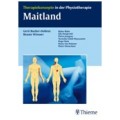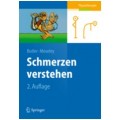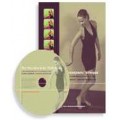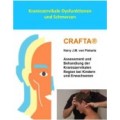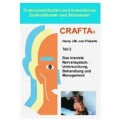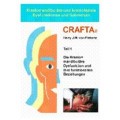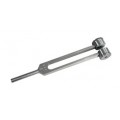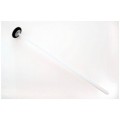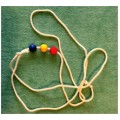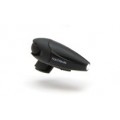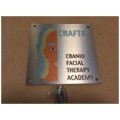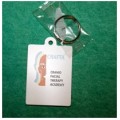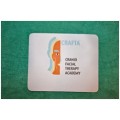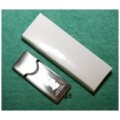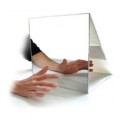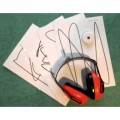 According to WHO and IHS, 50% of the adult population have suffered from headache during the course of a year. Many factors can influence the pain, but to recognize individual ones and then be able to reduce them could be challenging for patients.
According to WHO and IHS, 50% of the adult population have suffered from headache during the course of a year. Many factors can influence the pain, but to recognize individual ones and then be able to reduce them could be challenging for patients.Headache diaries are daily notes describing factors such as diet, activity, response to therapeutic procedures done by a patient (Marcus, Ready 2017).
They can lead to a hypothesis what could be a trigger of the pain, which may in the following enable the patient to reduce its influence. The idea is also to improve communication between the patient and the physician, providing information about otucomes of received medication or other therapeutic forms (Bevilaqua-Grossi 2016). For that reason, they may be also used as a reassessment tool for physical therapists.
Sounds as perfect as it can be for the patient - the possibility of uncovering the reason of headache, feeling of better control over the problem and good communication skill with the therapist. Whoever did it for the first time with the patient cannot be left unrewarded. But is it always as good as it seems? Or better to ask: is it good for each of our patients?
In worldwide respected neuromusculoskeletal concepts as CRAFTA® or Maitland Manual Therapy approach, the patient is always in the main of focus of the therapist (Maitland 2001, von Piekartz 2015). Let’s then take a closer look at our patient example.
The patient
Mrs. A attends physical therapy office due to a long history of headache. The area of pain is reported by a therapist on the body chart.

As shown in the graphic , Mrs. A suffers from a pain in the area of the right temple. Other craniofacial regions are free of symptoms. Physical therapy seems as a reasonable approach, as no other treatment before made her achieve her treatment goal: getting rid of pain. It seems to be coming back over and over and it reduce her daily life activities dramatically.
She cannot say whether there is a special activity or position aggravating or relieving her pain. Because it is a HEAD-ache, she is very worried. Obviously, it is an important part of the body. Furthermore, she read on different websites that it can be a sign of a really serious disease.
Having already visited several specialists, there seems to be no organic reason for the pain that is appearing, and no diagnosis can explain her symptoms. Still - Mrs. A feels the pain!
As she describes it, she tells us how HORRIBLE, OVERWHELMING AND TERRIFYING it can be, as it occurs in different, unsuspected situations and there is nothing she can do to relieve the pain. She feels left unarmed in the middle of a battlefield.
Advantages and disadvantages
Let’s then make a short summary of pros and cons of using headache diary in her case.
| + | - |
|---|---|
| detecting trigger factor | thinking even more about pain |
| helping to decide about region to be treated | waiting for the pain |
| measuring therapeutic effect | not all possible factors may be included by patient |
Time to make a therapeutic decision. After the assessment, therapy and reassessment is it optimal for this individual patient to get a headache diary?
It seems that Mrs. A has already some beliefs and previous treatment experiences. Possibly, in her case the pain is no longer a warning sign. It can have something to do with the processing mechanism (which could not be better described then on our previous blog, done by Gemma Manero,( https://crafta.net/index.php?route=news/article&news_id=50 ).
Maybe then making her even more aware of her pain will not be the a great idea, although keeping in mind the positive signs! We might need them for later on.
Final decision: try at first other possibilities. As a specialized therapist in the head, face and neck region you may check all the regions that can be involved in dysfunction: neural, cranial, muscular or other. If objective symptoms relate to the problem - clinical reasoning will be needed to perform best therapy for this individual patient. In case no appropriate results can be found, there are always hands-off techniques which could be implemented if red flags are excluded. You may try, for example, pacing training to regain control of the problem and probably some education about pain will be needed. Remember that patient’s misbeliefs can be sometimes as harmful as physical disorders (Li, 2008).
However, it does not mean we can throw headache diaries into the trash. It is definitely worth using and many research results show that. But! You have to make sure it will not cause more harm than good.
Suggestions for daily practice
Maybe the best solution seems to use some standardized questionnaires, to gain specific answers. Then, you have to ensure our patient will be precise in filling the headache diary. We have to pay attention that he or she is not analysing her/ his own diary. That could lead to increased influence of processing mechanism on the problem. Assure them also that they will be given exact answers and results. And one last point - it probably cannot be used as stand alone therapeutic intervention.
If you decide that your patient may be the appropriate candidate for a diary, here is what you might want to have a look at:
• iHeadache (available at http://www.iheadacheapp.com/)
• Migraine Buddy (available at http://www.migrainebuddy.com/)
• Headache diary by Froggyware (available at https://play.google.com/store/apps/)
• Migraine meter by Migraine.com (available at http://migraine.com/migraine-meter/)
(for more please read The Dos and Donts of Headache Diaries by D.A. Marcus, D.M.Ready).
References:
Allan Purdy, R. (2017). Discussing Migraine With Your Patients - A Common Sense Guide for Clinicians. Headache: The Journal of Head and Face Pain, 57(9), pp.1466-1467
including The Dos and Donts of Headache Diarie, D.A. Marcus, D.M.Ready
Bandarian-Balooch, S., Martin, P., McNally, B., Brunelli, A. and Mackenzie, S. (2017). Electronic-Diary for Recording Headaches, Triggers, and Medication Use: Development and Evaluation. Headache: The Journal of Head and Face Pain, 57(10), pp.1551-1569.
Baos, V., Ester, F., Castellanos, A., Nocea, G., Caloto, M. and Gerth, W. (2005). Use of a structured migraine diary improves patient and physician communication about migraine disability and treatment outcomes. International Journal of Clinical Practice, 59(3), pp.281-286.
Bevilaqua-Grossi, D., Gonçalves, M., Carvalho, G., Florencio, L., Dach, F., Speciali, J., Bigal, M. and Chaves, T. (2016). Additional Effects of a Physical Therapy Protocol on Headache Frequency, Pressure Pain Threshold, and Improvement Perception in Patients With Migraine and Associated Neck Pain: A Randomized Controlled Trial. Archives of Physical Medicine and Rehabilitation, 97(6), pp.866-874.
Li, S. (2008). Factors affecting therapeutic compliance: A review from the patient’s perspective. Therapeutics and Clinical Risk Management, Volume 4, pp.269-286.
Maitland, G. (2014). Vertebral Manipulation. Kent: Elsevier Science.
McKenzie, J. and Cutrer, F. (2009). How Well Do Headache Patients Remember? A
Comparison of Self-Report Measures of Headache Frequency and Severity in Patients with Migraine. Headache: The Journal of Head and Face Pain, 49(5), pp.669-672.
Piekartz, H., Andreotti, D., Arendt-Nielsen, L. and Bekkering, G. (2015). Kiefer, Gesichts- und Zervikalregion. Stuttgart: Georg Thieme Verlag.
Uthaikhup, S., Assapun, J., Watcharasaksilp, K. and Jull, G. (2017). Effectiveness of physiotherapy for seniors with recurrent headaches associated with neck pain and dysfunction: a randomized controlled trial. The Spine Journal, 17(1), pp.46-55.
World Health Organization. (2018). Headache disorders. [online] Available at: http://www.who.int/mediacentre/factsheets/fs277/en/ [Accessed 12 Jan. 2018].
 Contact the author:
Contact the author:Magdalena Bogucka
bogucka.m.e@gmail.com
Medical University of Łódź, Maxillo-facial Surgery Department,
plac Hallera 1, 90-001 Łódź, Poland


